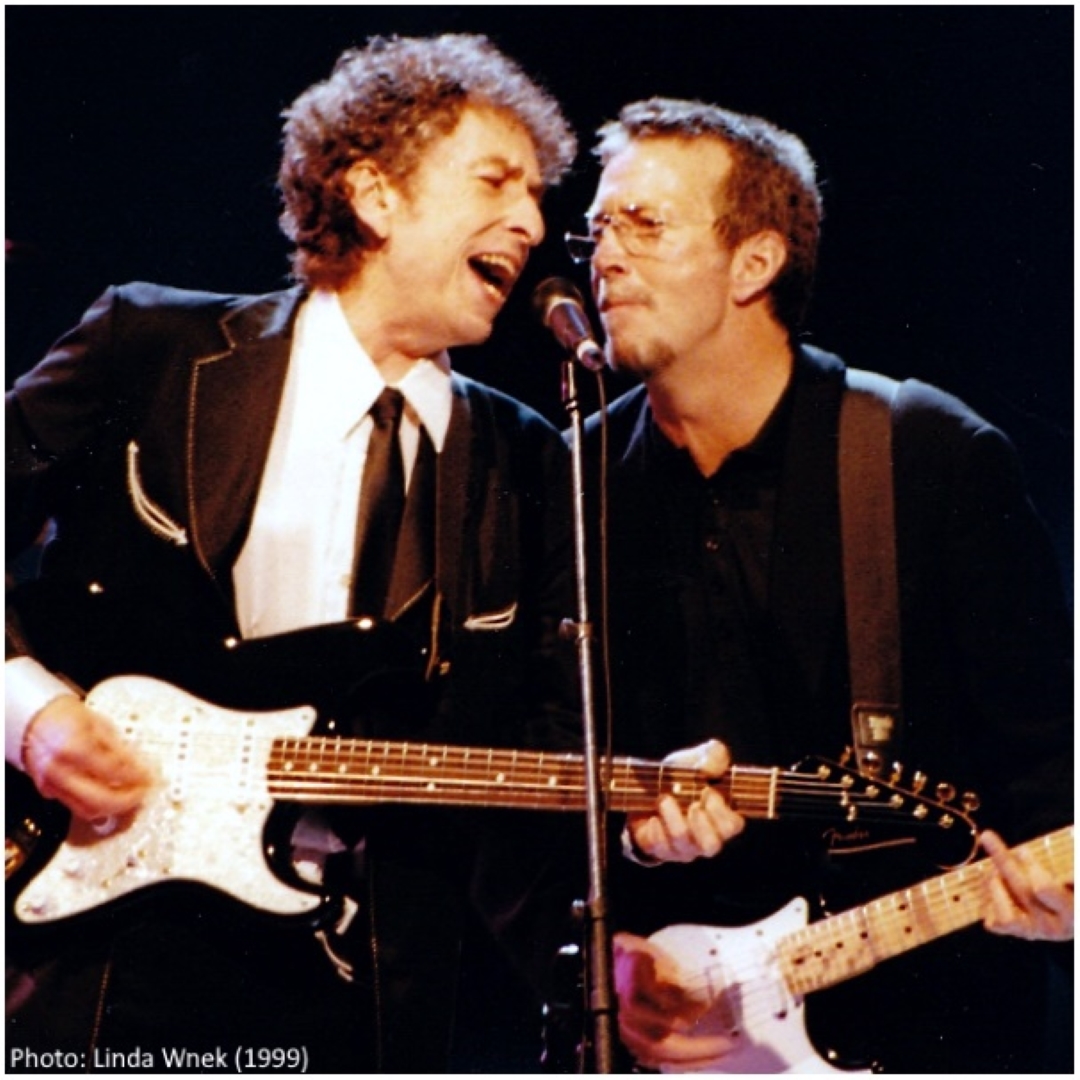🌟 A Musician at the Crossroads
By the late 1990s, Eric Clapton was not just a guitar god – he was a survivor. Behind the legendary riffs of “Layla” and the soulful melancholy of “Tears in Heaven”, Clapton carried the scars of decades of personal battles: heroin addiction in the 70s, heavy alcoholism in the 80s, and the devastating loss of his young son Conor in 1991.
Sobriety had given him a second chance at life, and with it came a new mission: to help others escape the chains of addiction. His answer was the Crossroads Centre, a rehabilitation facility he founded in 1998 on the island of Antigua. But to keep it alive – to ensure it could help people regardless of their financial status – Clapton turned back to the one thing that had always saved him: music.
On September 9, 1999, he called his friends. And when Clapton calls, the music world answers.

🎶 The Idea: Music as Medicine
The “Crossroads” concert wasn’t meant to be just another star-studded event. Clapton wanted it to stand for something deeper – the belief that music can heal, and that the community of musicians could rally to fight a silent epidemic.
The benefit concert took place at Madison Square Garden, New York. It brought together a stunning lineup: Bob Dylan, Sheryl Crow, David Sanborn, Mary J. Blige, John Mellencamp, and many others. It wasn’t just blues or rock – it was a tapestry of styles, mirroring the universality of addiction.
Clapton framed it as a night of unity: artists from different genres, generations, and backgrounds standing together to fight the same battle.
🎸 Clapton on Stage: From Survivor to Guide
When Clapton stepped onto the stage that night, guitar in hand, he wasn’t just the “guitar hero” fans had worshipped for decades. He was a man speaking through his music about redemption, resilience, and responsibility.
His setlist reflected this. Songs like “Change the World” and “Tears in Heaven” carried added weight – they weren’t just hits, they were testaments to survival. His guitar solos weren’t technical showpieces, they were confessions.
Clapton’s playing had always been emotional, but in 1999 it had something else: clarity. He had walked through fire and come out the other side. Now, he wanted to shine a light for others still trapped inside.
🌍 Why Antigua?
Some questioned why Clapton chose Antigua, a small Caribbean island, to build a rehab center. His answer was simple: it was a place of peace. Clapton had spent time there during his own recovery, and he believed the island’s tranquility could give addicts the space to heal.
The Crossroads Centre offered something unique – not just treatment, but dignity. It was open to everyone, regardless of their wealth or background. For Clapton, this was personal. He knew addiction didn’t discriminate. Rock stars, lawyers, laborers, teenagers – it could consume anyone. And he wanted Crossroads to be the place where healing began.
🎤 Friends in Music, Friends in Life
The lineup for the 1999 concert read like a Hall of Fame roster. Each artist brought their own energy, but together they created a sense of solidarity.
-
Bob Dylan delivered a set that felt like scripture, reminding the crowd of music’s power to outlast pain.
-
Sheryl Crow embodied a new generation, showing that the message of healing extended beyond Clapton’s peers.
-
Mary J. Blige, herself a survivor of personal struggles, sang with raw intensity that resonated with the night’s theme.
-
John Mellencamp brought heartland grit, underscoring that addiction wasn’t just a “rock star problem” – it was everywhere.
By the end, the stage felt less like Madison Square Garden and more like a church – a sanctuary built not of stone, but of sound.
💔 Clapton’s Honesty: Turning Wounds Into Wisdom
What made the night unforgettable wasn’t just the star power. It was Clapton’s willingness to be vulnerable. He spoke about his own addictions openly, acknowledging the darkness he had faced.
For many fans, Clapton was proof that recovery was possible. Here was a man who had once been enslaved by heroin, who had nearly lost himself in alcohol, and yet was now not only sober, but actively building a future for others.
That honesty gave the music more depth. “Tears in Heaven”, written after Conor’s tragic death, wasn’t just a personal lament anymore – it became a hymn for everyone who had lost something to addiction.
📀 The Aftermath: Building a Legacy
The 1999 “Crossroads” concert raised millions for the rehab centre in Antigua. But more importantly, it created momentum. Clapton would go on to host more Crossroads Guitar Festivals in the years that followed – massive gatherings of the world’s greatest guitarists, all raising funds for the same cause.
What started as one night in 1999 became a tradition, and today the Crossroads Centre stands as one of the most respected rehab facilities in the world. Thousands of people have walked through its doors, and countless lives have been saved – because Eric Clapton decided to turn his own struggles into a mission.
🎶 More Than a Concert
Looking back, the 1999 “Crossroads” concert wasn’t just about music. It was about community, about using art to fight despair, about turning pain into purpose.
For Clapton, it marked a turning point. He would always be remembered for “Layla”, “Cocaine”, and “Wonderful Tonight”. But for those who saw him that night, his greatest riff was compassion.